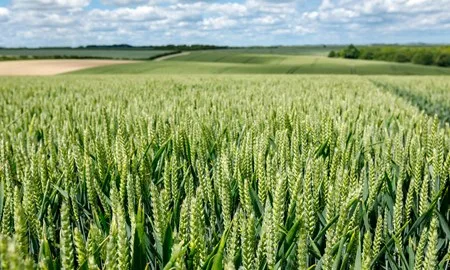
Sam Harvey takes a look at 6 decisions for growers this June and July
Author
Sam Harvey | 4th June 2020East Anglia: 6 agronomy tasks to consider this June and July
Crop Progress
It couldn’t have got much worse – a prolonged spring drought on the back of late establishment into generally poor conditions. This season’s crops don’t have much resilience with, in the main, restricted rooting capacity unable to cope with peak demand in April and May with virtually no rainfall. Crops that looked reasonable for the year in late May have started to go backwards quickly, and current forecast offer very little hope for rain as we head into June. So for many growers it is a pretty desperate situation.
Sam’s agronomy tips for June and July
1. Manage wheat crops on an individual basis
Flowering has started extremely early in many wheat varieties and if crops are capable of hanging on it could lead to reasonable a grain-fill period. Current conditions make investment on ear sprays in wheat a dilemma. What you decide to do will most likely depend on what you perceive the crop potential is and its susceptibility to brown rust (and probably yellow rust). It’s difficult to recommend without understanding specific fungicide inputs and timings to date.
Many crops will have received later flag sprays which in part covered the ear. Where foliar top up post T2 for e.g. rust protection is the objective then there is more flexibility on timing of T3.
However, if weather becomes unsettled during flowering then Fusarium and Microdochium will be in the front seat. To minimise the impact of these pathogens timing and product choice is critical. In this situation application must be made at early to mid-flower when you start to see anthers in the middle of the ear. With early flowering this season, as we end May, 25% crops are at or beyond this stage already.
The key to extracting the optimum potential of a crop is to extend green leaf retention and grain fill as long as possible. This means delaying natural senescence where soil moisture deficit allows. Don’t under estimate those final days generating significant yield and specific weight gains.
2. Next season starts now for grassweed control
June is a good time to start understanding and managing the key grassweed challenges ready for next season. That means:
Preventing seed return from herbicide failure, by either hand rogueing or spraying off with Roundup (glyphosate), if appropriate.
Identifying and mapping areas to help tailor the appropriate cultural controls such as primary cultivation and variable inputs of seed or residual herbicides.
is a great platform which can help.
Sampling seeds for resistance status to help inform decisions by knowing which chemistries will be most effective
3. No room for complacency with late blight in potatoes
With aggressive late blight strains like A2_36 and fluazinam insensitive A2_37 common within the population robust late blight control requires careful consideration. The importance of building fungicide programmes on sound resistance management principles has never been more important.
Infinito (propamocarb + fluopicolide) has a unique mode of action and controls all current strains with combined foliar and tuber blight activity. With few active ingredients with tuber blight activity and indeed only 2 different mode of actions, Infinito is an integral part of any sound programme.
4. Keep water volumes up if spraying for aphids in sugar beet
Aphid pressure has been immense so far this spring, with Myzus persicae in sugar beet crops at very high levels. There are limited options for foliar sprays, and these options may well have already been deployed by now, but if you are still applying insecticides it is important to keep water volumes up to ensure coverage for effective control.
There is limited systemicity with products such as Biscaya (thiacloprid) and coverage is essential as you’re primarily relying on contact activity for control. Remember new growth will essentially be unprotected and vulnerable to continued migration. Recent high temperatures will also reduce persistency of insecticides.
While aphid levels have been high, initial testing of Myzus persicae suggest virus levels are quite low, but it is still important to treat when thresholds are breached, as an initial infection from winged aphids potentially only carrying low levels of virus can rapidly spread within crop with secondary infection of wingless progeny.
5. Balance efficacy with crop safety for weed control in maize
Just as in sugar beet it’s not an easy year for weed control in maize with the dry weather. It’s a balance between avoiding spraying in stress conditions, such as higher temperatures and light intensity, potentially increasing the risk of checking the crop and compromising herbicidal activity. Applying to small weeds is particularly important for maximum efficacy given conditions.
Maister (foramsulfuron + iodosulfuron) + the adjuvant Mero is the strongest grass and broadleaved option, but requires moisture and active growth. Ensure you spray early morning to get best weed control and at the same time minimise stress on the crop.
6. Consider signing up for a free trial of Climate FieldView
While harvest could set some records for all the wrong reasons this year, there is likely to be a great deal of variation between fields and within fields, and between varieties, different drilling dates, establishment regimes and input programmes.
Our digital platform Climate FieldView Plus can help you easily visualise those differences in real-time while combining, for whoever is logged into your account on their smart phone or tablet. It provides a great starting point for making informed management decisions for next season.
If you’d like to give it a go this harvest in a free one year trial, then register your interest here: https://cropscience.bayer.co.uk/fieldview/
Local technical updates
See all of our latest agronomy advice from across the country